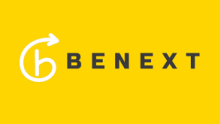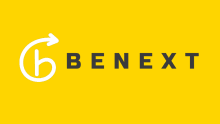BeNext Radio Episode 3: Managing Complexity and the Cynefin Framework with Dave Snowden

This conversation with Dave Snowden comes as part of the four-week BeNext Agile & Design Thinking for HR Teams Program. You can click here for more information.
In Episode 3 of the BeNext Radio Show, our host Pilar Orti shares with us the voice of management consultant, researcher and BeNext Lighthouse speaker, Dave Snowden. Founder and Chief Scientific Officer of Cognitive Edge, Dave is also the mind behind the groundbreaking Cynefin framework - a sense-making tool that supports decision-making by identifying which problem domain we are in.
While we touched briefly on the Cynefin framework last week, in Episode 3, Pilar takes a harder look at organisations through the lens of complexity science, examining how Dave’s framework can be used to define the contexts we find ourselves in which, as we know, rarely follow a clear and predictable pattern. The episode is all about understanding the complex situations in our organisation and how this can help us navigate and drive meaningful change. In this eye-opening conversation, Dave explains how complex systems work, making a case for allowing self-organisation to take its course (as it does in nature) along with advice for leaders on setting vector targets rather than pinning focus onto explicit goals.
“Everything is Entangled”
Complex, complicated, simple or chaotic? Whichever domain our organisation is in, how do we navigate and even drive change particularly in times of crisis? As Pilar points out, organisations are by their nature complex because they are human. In Dave’s own words, “in a complex system everything is entangled. That's the key phrase in complexity: everything is connected with everything else. It's like a mangrove swamp - you pull one thing and something else happens that you didn't expect. That’s most human systems.”
Dave also uses the metaphor of traffic in Italy or India for a complex (not chaotic, as it’s often described) system. “If you walk across the street at a constant speed, in a straight line, nobody will hit you. If you wait for permission to travel, you'll either stand on the edge for ages or if you hesitate, you'll die, right? It's actually a complex system, it works like a flocking behavior.”
When we find ourselves in a complex, uncertain situation, then, it seems the best solution might be to let such systems self-organise. How does this play out for HR teams?
Outcome-based targets or vector measures
In relation to complex systems, one of the common issues Dave identifies in organisations is too much of a focus on outcome-based targets. “If you understand the complex adaptive system you know you can't know where to go because everything changes,” Dave explains, citing a metastudy in which it was found that whenever people were working for explicit goals, it destroyed intrinsic motivation. This is because goal-setting shifts the focus solely to goal-achievement, rather than a concentration on what that goal is meant to measure.
Goals also mean people are less open to novelty. Instead, Dave says, leaders could consider vector measures over outcome targets. “A vector measures direction, speed of travel for intensity of effort - so have you started a journey with a sense of direction? Because then you're open to novelty on the pathway.”
To create a more humane system, therefore, Dave says we should set managers outcome-based or vector targets depending on whether the situation is ordered (with a high degree of constraints, making behavior predictable) or complex (where everything is entangled).
To hear the specific examples Dave gives of what these vector targets might look like, download it by clicking here or listen to Episode 3 in the player above. To gain a deeper understanding of how the Cynefin framework is still being applied to real-life scenarios, you can also download ‘Managing Complexity (and Chaos) in Times of Crisis,’ a field guide for decision-making inspired by the Cynefin framework here:
This field guide, which Pilar refers to in the episode, touches on many of the themes explored in Episode 3: setting and managing boundaries, informal structures, remaining open to novelty and keeping an ongoing assessment of an uncertain situation that can change at any moment.







